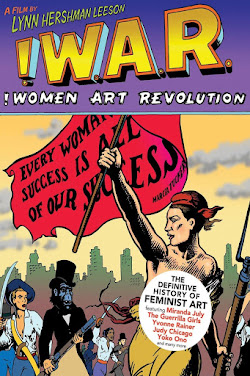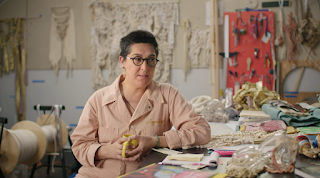Kelly Lindner's talk "How'd You Get to Be a Curator Anyway?"

At Sac State, Kelly Lindner hosted a talk titled "How'd You Get to Be a Curator Anyway?" The lecture dove into her biography, through which she discussed her career up until her current work as a curator at Sac State. She went into detail on the various exhibitions she helped host over the years, and the various artists she collaborated with. She started out as pursuing an Art History degree at Smith College, but when she realized her new-found respect for its museum and the possibilities for what it can do for not only art but the community, she interned at the Althea Viafora Gallery in New York and ended up graduating Smith College with a History degree with an Art History minor. She worked for many years at various art museums as either an assistant director or a director, but wanted to see what she could do with her own art space. Thus, she opened her Livingroom space in her own apartment to see both her feelings towards running her own space and to see how artists can play with this more unconventional space as well. Although it was successful, she didn't want to have to worry about financial expenses but she was passionate for keeping up the communication she had amongst herself and the artist. Thus, she worked at the CCS Hessel Museum of Art, and decided that she wanted to pursue a career in a museum. She worked at the George Adams Gallery, then moved to California to work for the San Francisco Arts Commission, and then was offered a position at Chico State as an art curator. As of now, she works as the head of the Galleries and Collections Curator for the Sacramento State art galleries.
What I found fascinating is that she seems fascinated with the idea of "place," and encouraged the artist with understanding how their work is associated with their place. She believed that art gives people "a new view of the world around them," in which art can provide the audience a connection between the viewer and their environment. She also believes that students are her most important audience and participants, as they only remain in college for a selected amount of time. In a way, if she was able to actively engage with students successfully, not only would this newfound context stick with them, but it would carry on with them throughout her life. She didn't precisely answer my question, but when asked which exhibitions stood out to her the most, she didn't have an answer, since:
'They all fulfilled something for me, whether it was watching an artist come into their own. And for especially for the emerging artists that I showed in the Livingroom that have gone on to do extraordinary things, like that for me was like the moment "Oh! I gave you that chance, and you continued. That's great!"'


The Livingroom gallery is a great idea, isn't it?
ReplyDelete